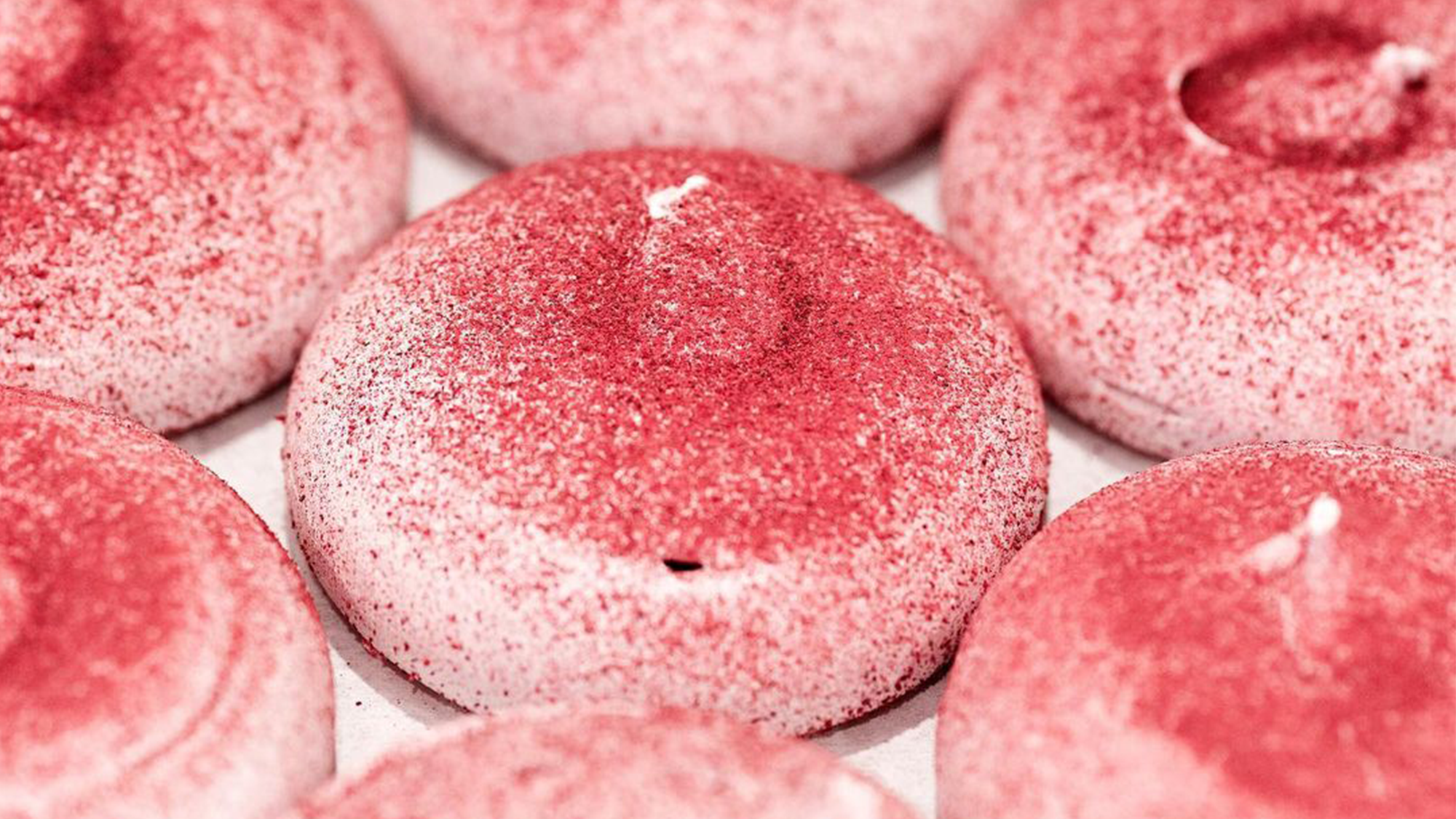
A Tour of the Desserts at Damian, and What to Drink with Them
It was Sunday night and the kitchen at Damian had just closed. We were late (traffic), and the reason we were heading to the Enrique Olvera-backed Mexican restaurant, built on house-milled masa and peak-season Californian produce, was for Felix Campos — a friend and regular face to anyone who frequented the bars at Atla and Cosme in New York, where he stirred and shook cocktails for over three years before relocating to L.A. during the pandemic.
Slightly resigned, we entered the dimly lit warehouse space, still buzzing in the afterglow of service. We perched ourselves at the all-concrete bar as Campos greeted us with pours of mezcal. What we hadn’t yet realized was that dessert was still very much on the menu. Much to our delight, clay plates of beautiful sweet creations — a spectacularly green hoja santa soft serve, a sesame-laced flan — slid across the bar. A joyous ride of a dessert tasting ensued, made even better with Campos-approved drink pairings for each and every bite.
Post-service, Campos led us into the kitchen to quiz pastry chef Joshua Ulmer on his creations, to the beat of Bad Bunny blasting in the background. Ulmer is also a Cosme vet, working on pastry R&D straight out of culinary school, up until COVID shut restaurants down. A pandemic move later, Ulmer helped open Damian in October 2020 as head pastry chef. His biggest challenge? To fine-tune his own vision for the dessert program, blending his French pastry background with the Mexican techniques and traditions that anchor Olvera’s restaurants.
Here, Ulmer gives us the low-down on the five desserts currently on Damian’s menu, alongside Campos’ drink picks. If you’d like to pretend you’re in the kitchen, too, head here for a soundtrack.
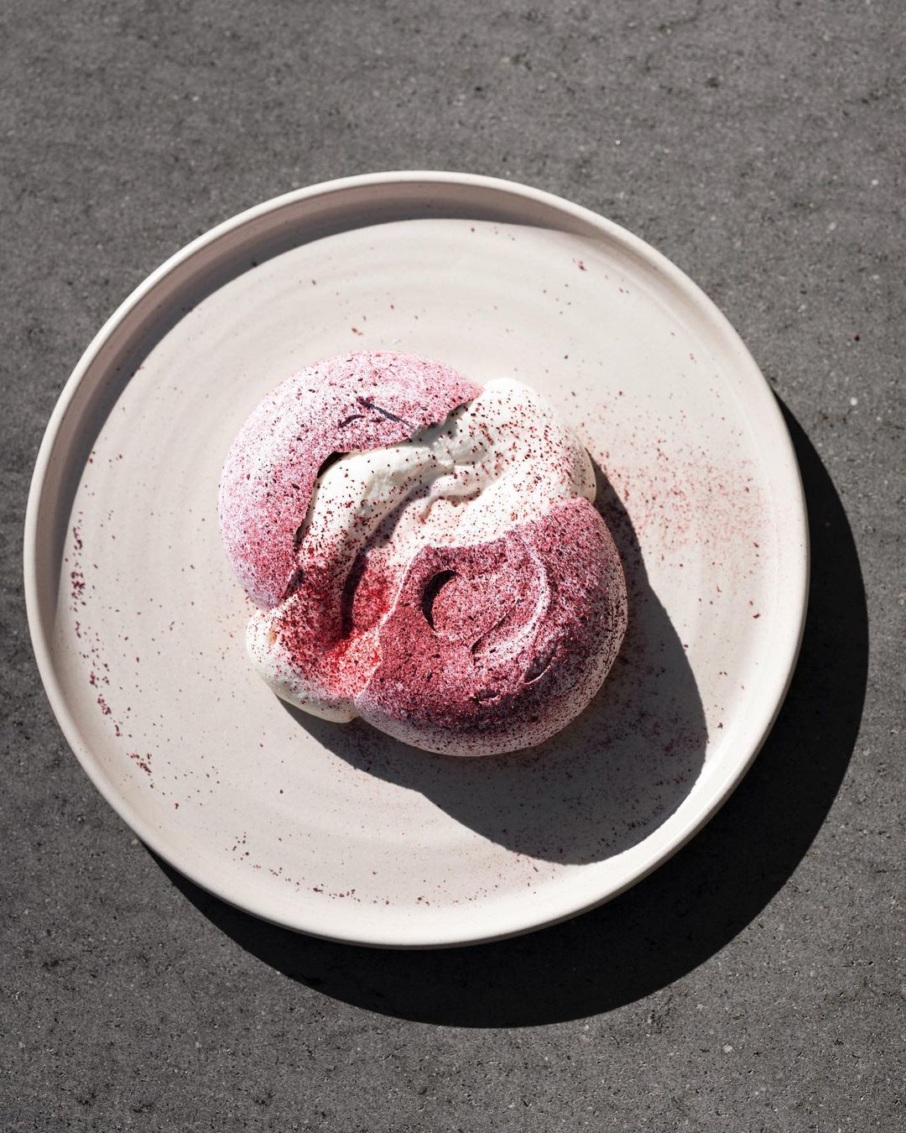
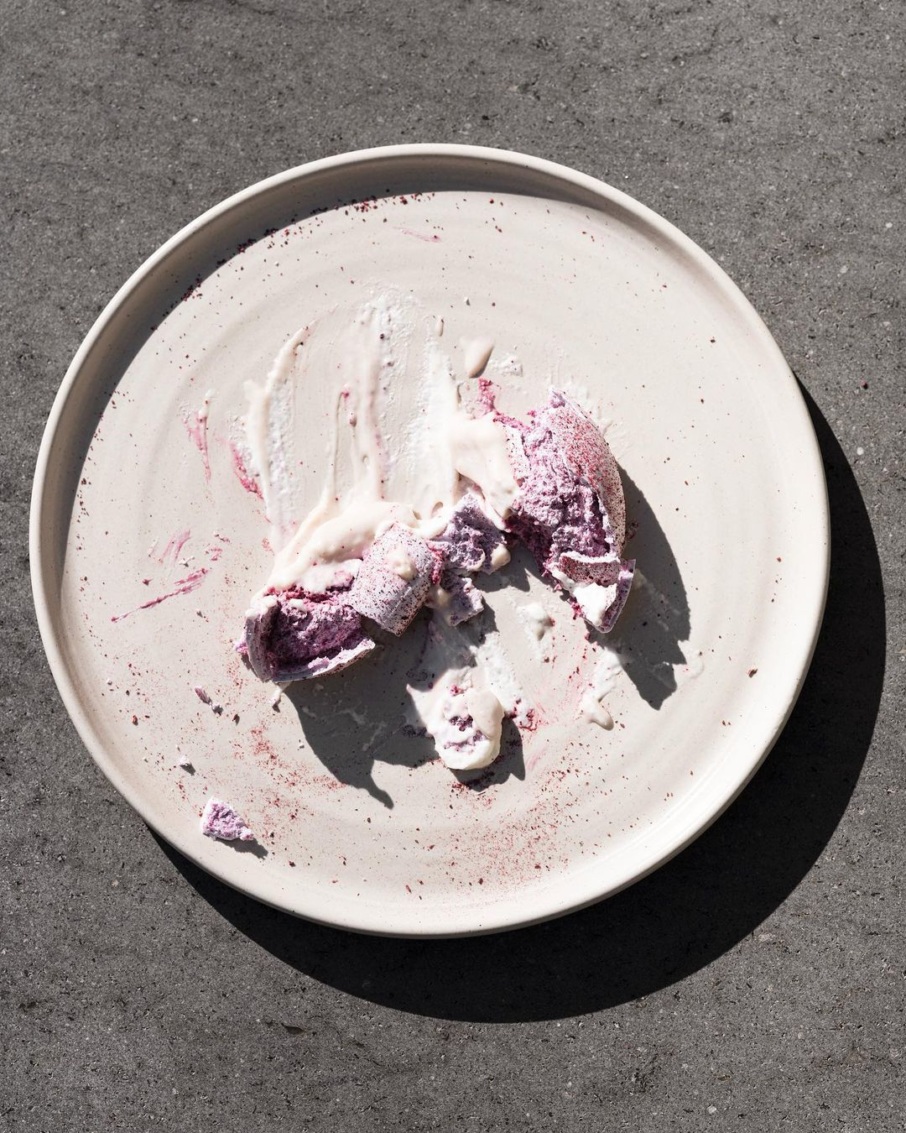
1. Hibiscus Meringue
(Strawberry)
“The hibiscus we use comes from Oaxaca and is sourced through Masienda. The meringue itself is a very basic French meringue — egg whites and sugar whipped together. At the end of the whipping process, we fold in the hibiscus powder. It gets piped and dusted with more hibiscus over the top, and then partially dehydrated so you get that texture of hard meringue on the outside that’s still kind of chewy on the inside. After that, it’s a vanilla Chantilly — just sweetened heavy cream with vanilla — and the interior cream is a strawberry curd. We use puréed Harry’s Berries in the curd. Then it gets dusted with more hibiscus powder on the outside.
“This is one of the first desserts I worked on. I landed in L.A. two weeks before we opened to immediately go into R&D. This one is a seasonal version of the meringue. Because [we opened Damian in] October, I started with pomegranate. Once we switched into spring, I got into strawberries, because Harry’s Berries are just amazing.”
Felix’s recommended drink pairing: La Medida Espadín.
“A really interesting thing that I learned from Yana Volfson [the beverage director at all of Olvera’s restaurants]: Flavors can be translated into colors. A carrot is orange, a berry is going to be red, a cucumber, green. You can literally associate flavors to colors. And from that perspective, you can mix and match things that do go along with each other.
“With the meringue, it’s a hue of magenta from the strawberries and hibiscus. There are a few things that go along with it, and my favorite is the La Medida Espadín mezcal. It’s high ABV and properly done, so it’s strong. But the flavor profile is really delicate for such a strong spirit. This one has very fragrant, floral, berry-like notes, even from the nose. This mezcal goes very well with the dessert.”
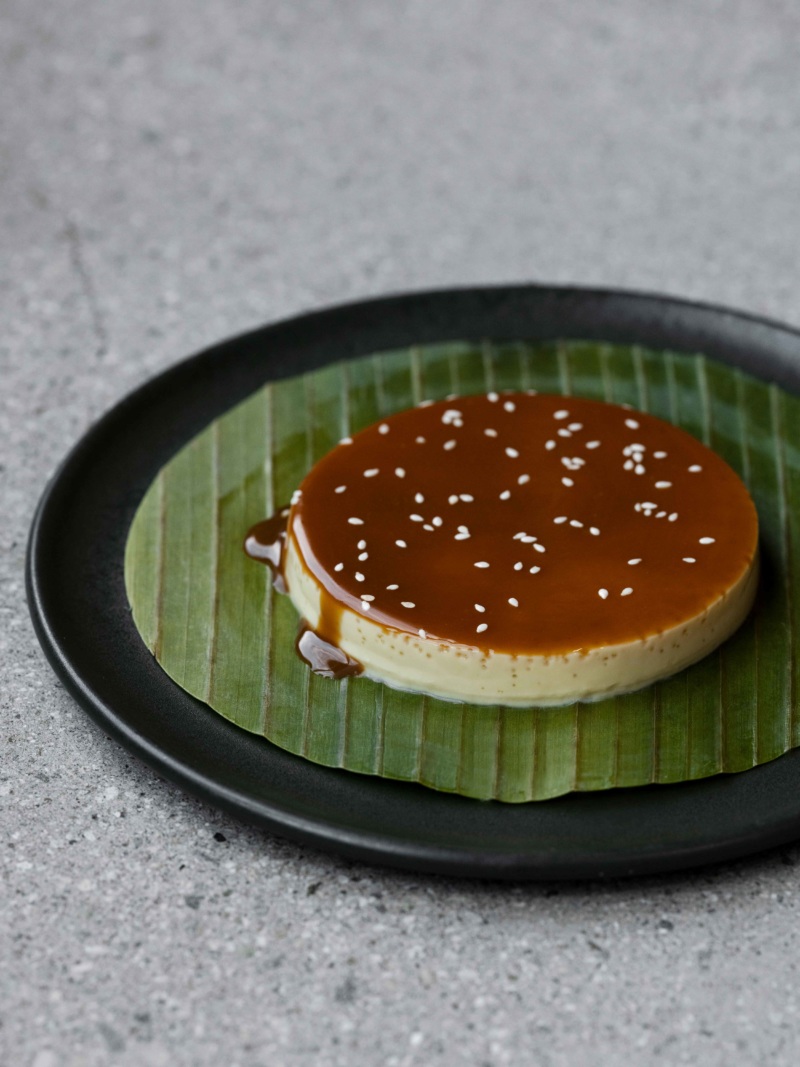

2. Banana Leaf Flan
(Sesame caramel)
“Chef Enrique [Olvera] was looking for a flan for the opening menu and I needed to come up with something as quickly as possible. I just kind of stood in the walk-in for a little bit and saw the banana leaves. We’d worked with them at Cosme, and I was like, ‘Alright, this might be interesting.’
“The flan itself is a basic recipe, using evaporated milk, sweetened condensed milk, and heavy cream to infuse the banana leaf into. We use all the scraps from the leaves to infuse some of the flan base itself. That infusion takes about three to four hours, before it gets strained and then blended with crème fraîche and eggs. Then it gets baked, so it has that luscious soft texture, and topped with sesame caramel — the caramel is a super-dark amber color, in that French style of cooking caramels to their farthest point. Finally, we use tahini to season the caramel to get the sesame flavor out of it.”
Felix’s recommended drink pairing: The Rare Wine Company Baltimore Rainwater Madeira.
“For the banana leaf flan, we’re doing a Madeira, a Portuguese fortified wine. This one has been produced and aged on the island of Madeira, off the coast of Africa. It’s a tiny, tiny island surrounded by ocean, so, everything that comes out of there has this beautiful salinity that’s just in the air.
“The banana leaf flan has a slight saltiness that’s much more on the savory and vegetal side. This Madeira is really bright and on the sweeter side, so it accentuates everything about the banana leaf. When you have them together, it’s like the sugar and the caramel work even better, it pops even higher, and evens out the acid from the Madeira, too. It’s really good.”
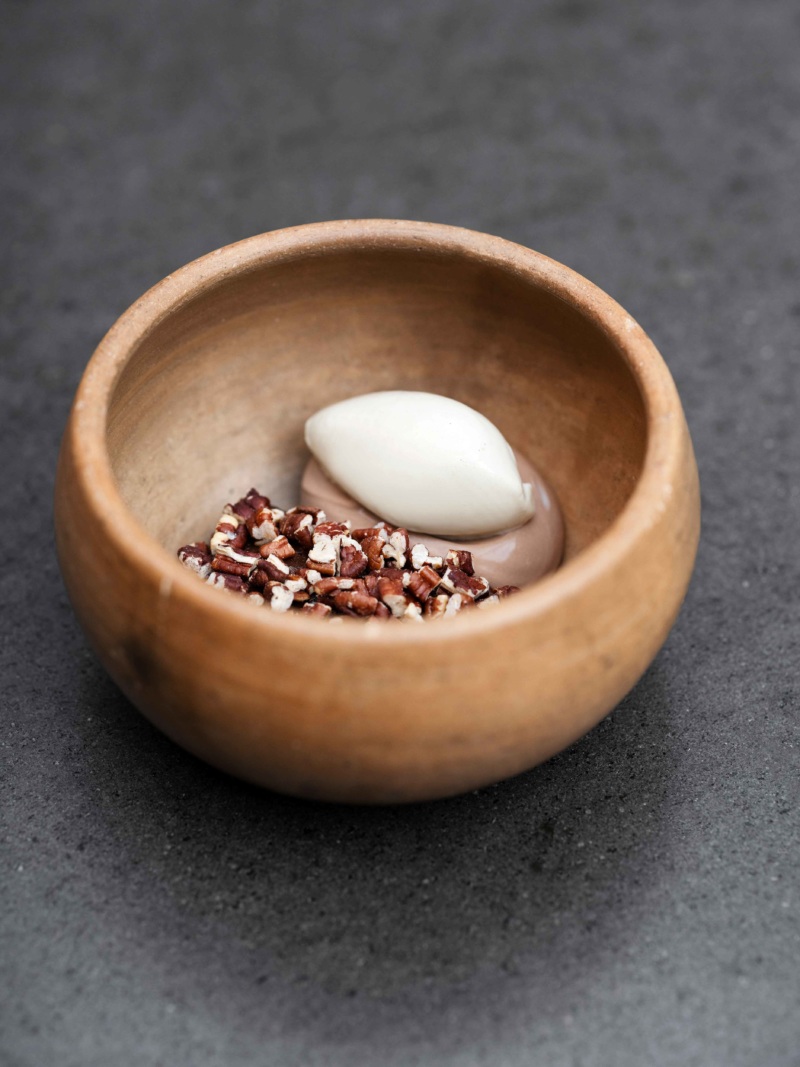

3. Pecan Tamal
(Chocolate, plantain)
“I didn’t have chocolate on the menu, and after tirelessly getting requests for a chocolate dessert, I finally put one together. We started with a financier, essentially, but using nuts — pecans — to create all of the fat for the tamal, versus oil, lard, or butter. It’s just the nut butter, masa, sugar, salt, and seasonings, which get steamed in banana leaves into that classic financier pillow shape. After cooking, they’re glazed with a coconut praline that we make by caramelizing sugar, toasting cocoa nibs, and grinding it into a super smooth paste to go on top of the tamal. It gets some toasted pecans and is served with a caramelized milk chocolate namelaka. Namelaka is a technique created by Valrhona to make a slightly aerated ganache, and it’s the right texture for this dish. From there, it gets plantain ice cream — it’s a crème anglaise base that gets blended with plantains that have been roasted in their peels.
“It’s the most decadent dessert, but it doesn’t feel too heavy, which I like. I looked at it one day, and I was like, ‘Oh, this is just banana bread,’ but with all the ratios and the flavor components switched around. Sometimes, I don’t realize where things come from in my head until after I make them.”
Felix’s recommended drink pairing: Carajillo.
“I like a good old Carajillo, the espresso shot with liqueur. A little cold pick-me-up that you have on the side. The pecan tamal is a warm dish with a little bit of ice cream, so if you have something sweet and bitter with it, it works really nicely.
“Licor 43 is a Spanish liqueur with 43 ingredients in it — orange peel, clove, cinnamon, a little ginger, allspice, star anise, so many. Mixed with espresso on ice, it’s the original espresso martini. Nobody drinks it outside of Spain and Mexico. It was kind of forgotten until a few years ago, when Enrique Olvera and Cosme brought it back into the game. It’s pretty cool. Same thing with Campari and those other spirits that you forgot about: all of a sudden, everyone is drinking Negronis.”
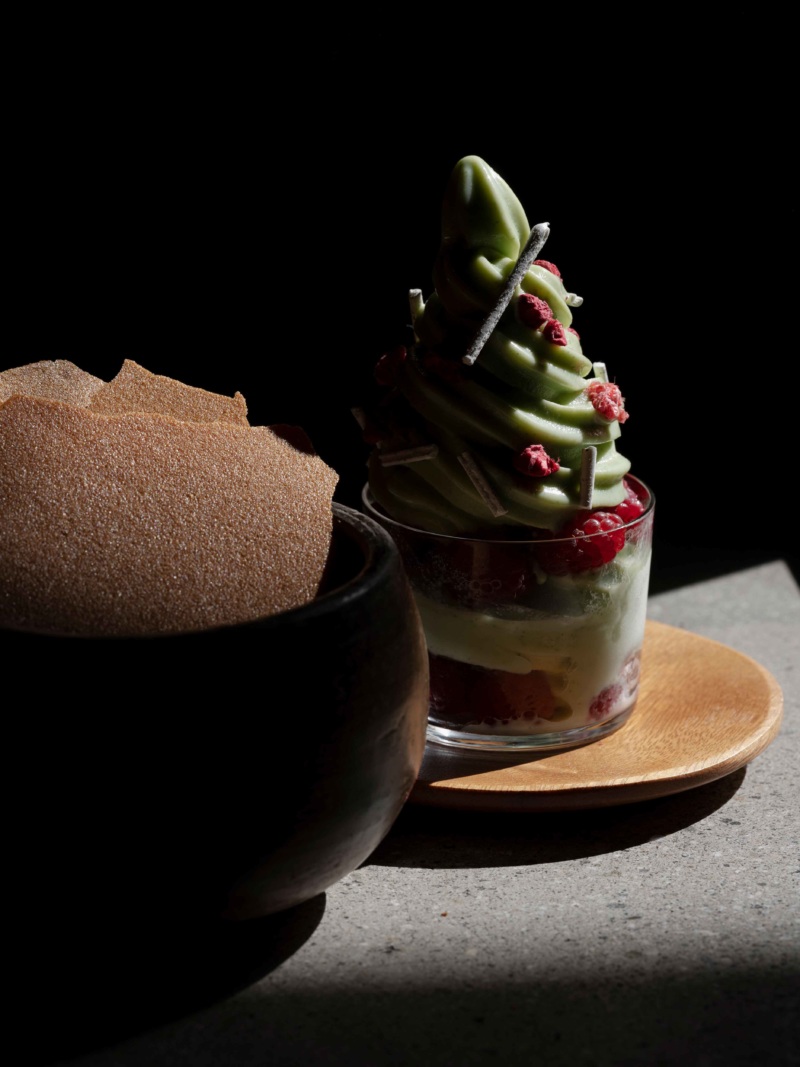

4. Soft Serve
(Hoja santa, raspberries)
“I grew up on Long Island, and one of my favorite things in the world is the ice cream man, Mr. Softee. My order is always a vanilla cone with rainbow sprinkles. So, I started there, incorporated Mexican components, and made it appropriate for a restaurant setting. The base of the ice cream itself is straight up vanilla ice cream. Once it’s made and cooled, we blanch hoja santa and blend it into the base, which is why it’s super-green. It gets this menthol kind of note. I really love the flavor of hoja santa, especially in sweet scenarios, because it’s almost like a root beer float. To pair off the ice cream, we have fresh raspberries, freeze-dried raspberries, and then burnt vanilla meringue sprinkles, which adds a smoky note. It’s served with my version of a waffle cone: a corn tuile. We use the corn from making masa and masa harina, bound with egg whites, butter, and sugar. It’s definitely my favorite kitchen snack.”
Felix’s recommended drink pairing: Origen Raíz Sotol.
“For that one, I have a preference: the sotol, another spirit that has been gaining traction in the last few years. It’s been produced for hundreds of years in Chihuahua, a northern state in Mexico. Sotol is made from a cousin of the agave — it’s more of a tree, but the production method is exactly the same.
“The final product is a very strong spirit that has a mint-like note. Again, we’re going into this color and flavor conversation: The soft serve is very green from the hoja santa; it’s very bright, very vegetal. It’s very cold, and you have this spirit that warms you up. The sotol has a cool chocolate- and mint-like flavor. There are about three different varietals of this plant that are made into sotol, and they all have these green-like notes, some more minty than others, some more herbal.”
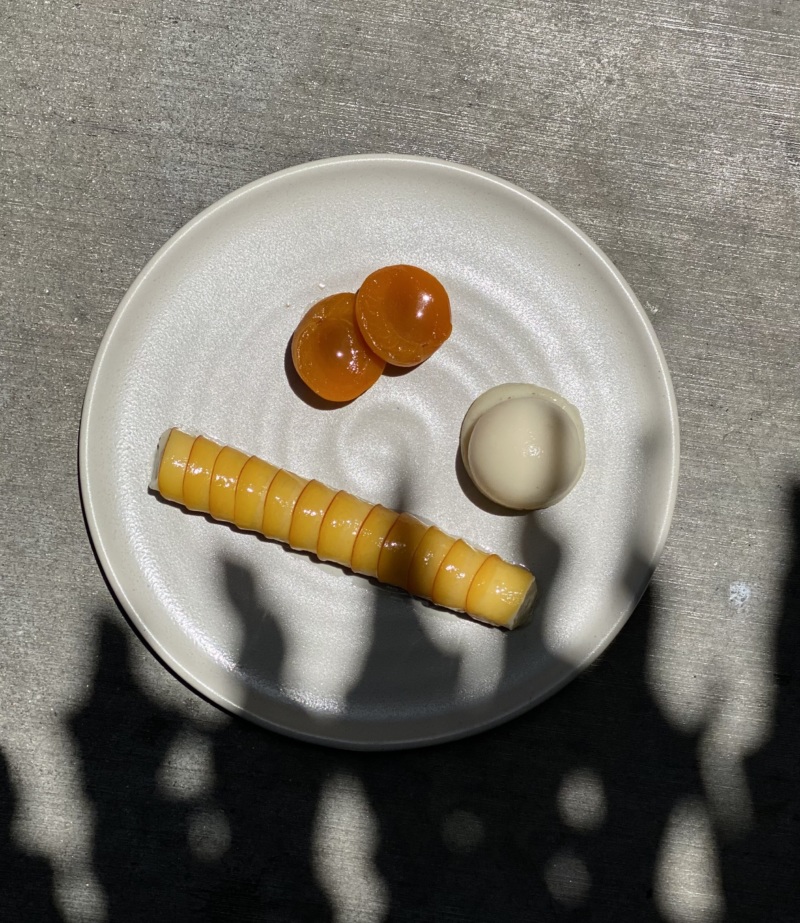

5. Nicuatole
(Stone fruit, ginger, soy)
“The last dessert, and now the newest, is our vegan option: a soy-based nicuatole. A nicuatole is almost like the Mexican version of a crémeux. It’s native to Oaxaca and is set completely with the corn starch found in masa.
“I’m using soy milk to create a slightly creamier texture, as opposed to the typical nicuatole that’s made with water. Once the nicuatoles are set, they’re wrapped in stone fruit and brushed with a lilac-infused agave. Right now, we’re using Snow White peaches from Murray’s Family Farm in Bakersfield, but the fruit we use will rotate based on the best stone fruit available in the market. The nicuatole gets served with an apricot that has been glazed in a mixture of caramel and stone fruit juice from overripe fruit. It’s finished with a ginger and lilac sorbet that uses the same lilac agave I use to brush the outside of the nicuatole. The dish is really meant to highlight the beautiful stone fruit we have available.”
Felix’s recommended drink pairing: Domaine du Clos Naudin Vouvray Moelleux 2009.
“This is a more traditional approach to dessert and beverage pairing. It brings out the stone fruit quite radically since the natural notes in this particular wine are actual stone fruits — overripe apricots and peaches — with a beautiful finish of caramel, citrus, and spice. As the dessert hits the palate in its entirety, the ginger becomes more pronounced, but gets tamed by the velvety texture of the nicuatole and agave-covered stone fruits. The flint-clay and limestone-clay soils do translate into the wine, even with its sweet-like characteristics, to tame the spicy ginger sorbet and enhance the freshness of the fruit with a rounding, lemon-like acidity.
“We serve things that not only would we drink and that go well with our food, but also that have some sort of backbone. As I tell everyone who comes in, most of us know the producers, from the farmer that brings us amazing strawberries, to the fifth-generation mezcalero out there on his own in the middle of Durango, to the French dude that still makes wine the old way and refuses to change in the Loire. We are very proud to showcase what we know and who we know.”


























